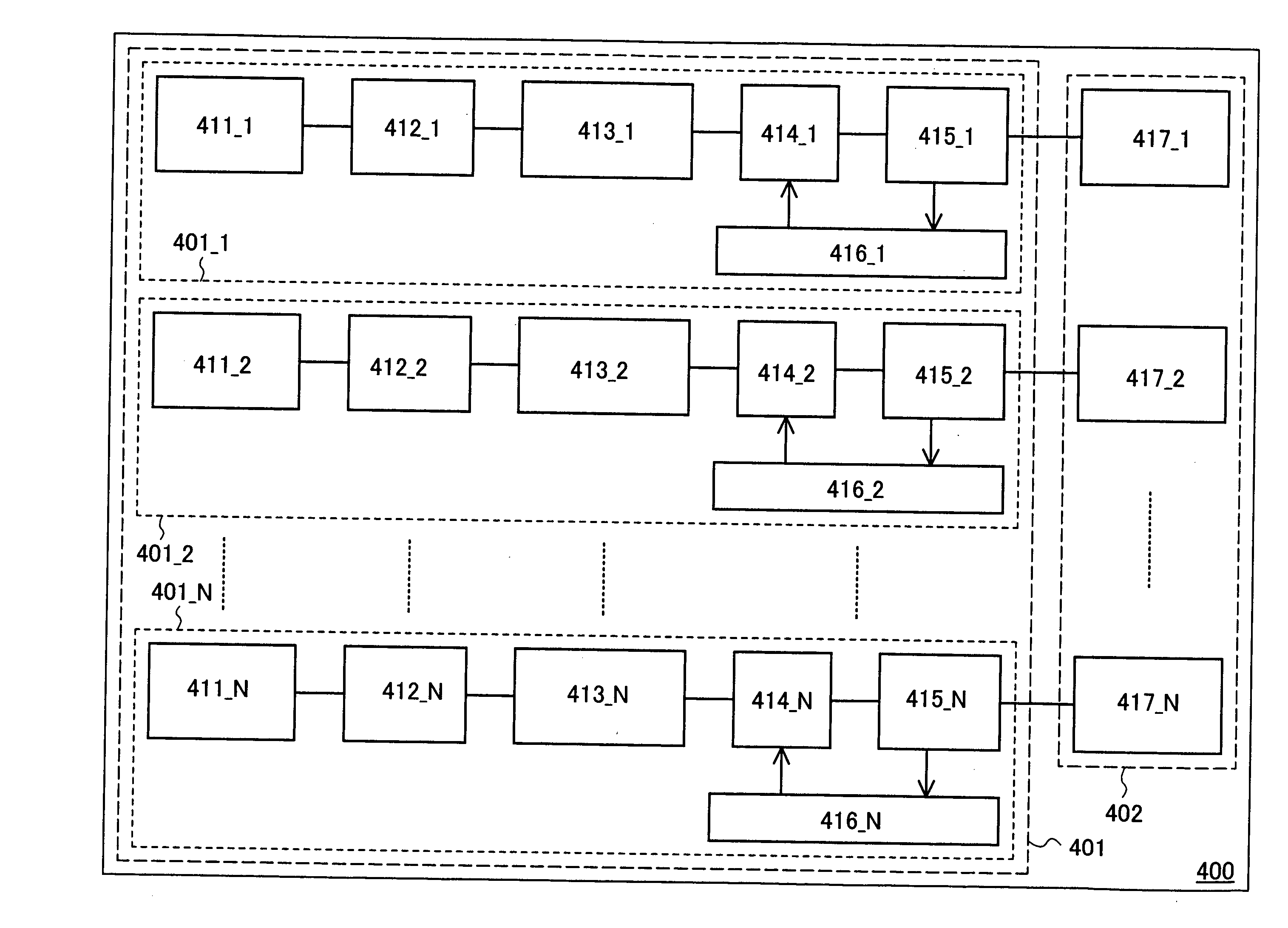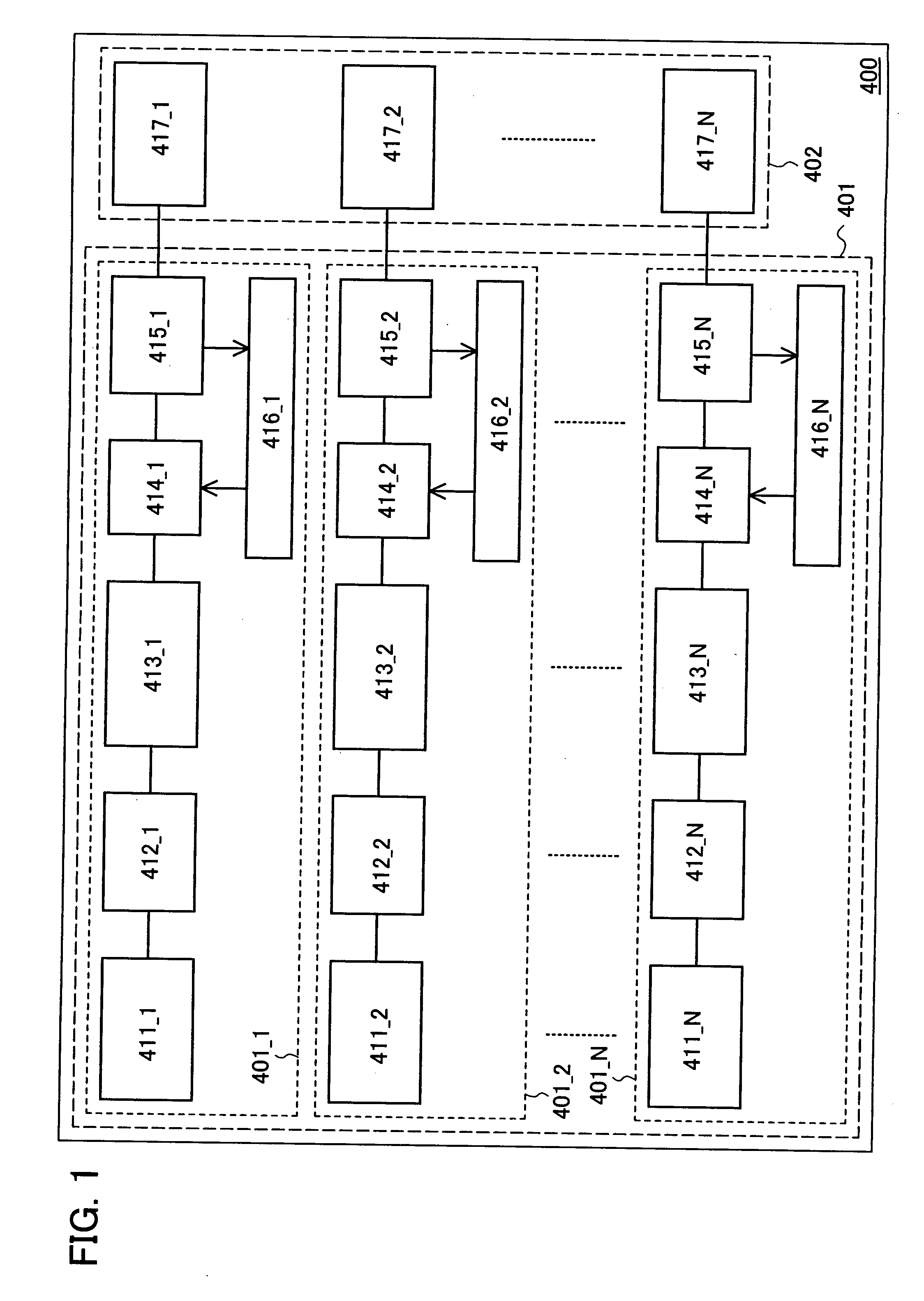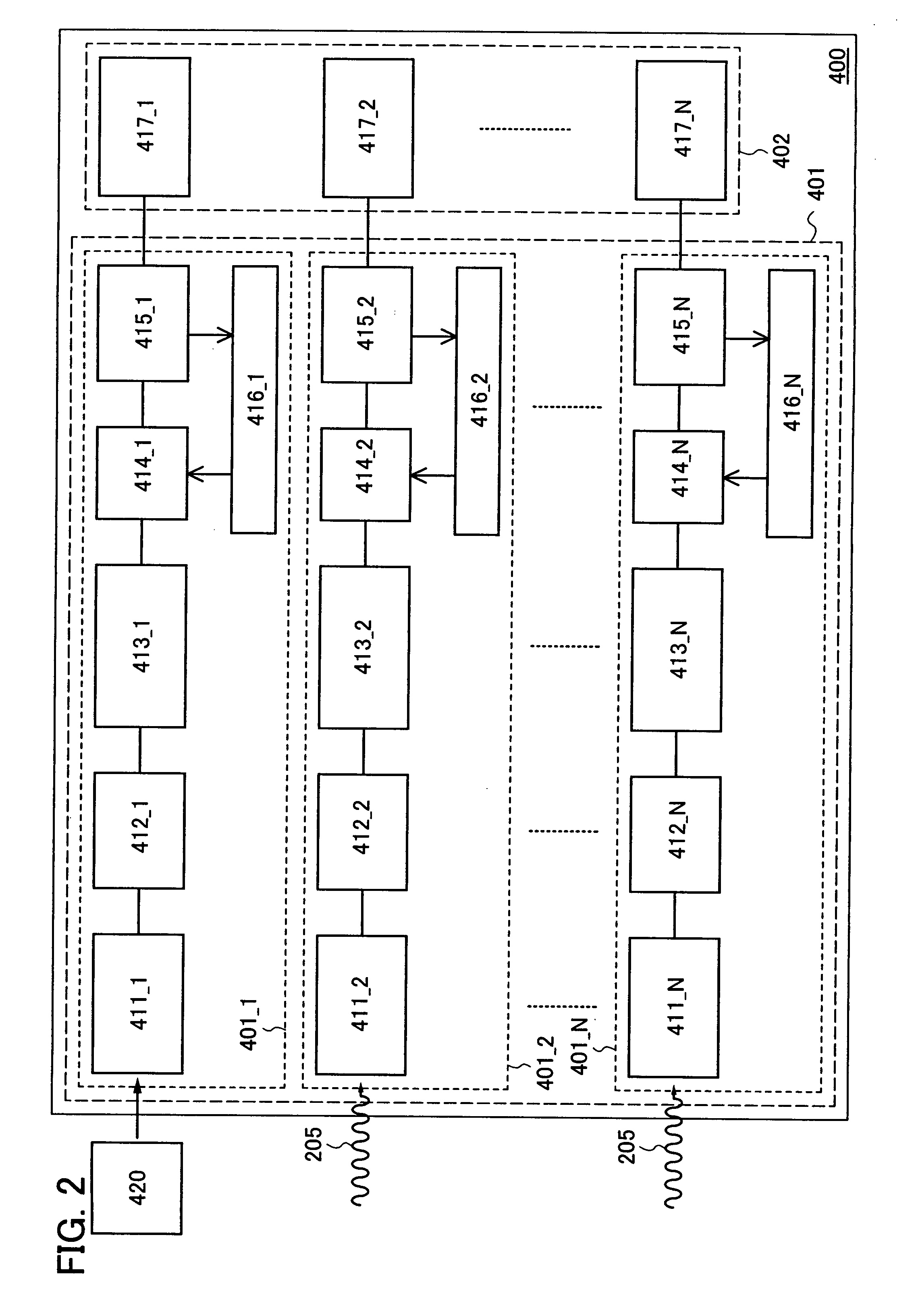Wireless communication device
a wireless communication and wireless technology, applied in the direction of power management, near-field systems using receivers, instruments, etc., can solve the problems of no efficient method other than charging, users' troublesome charging, and limit such improvement, so as to facilitate the charging of the battery provided in the wireless communication device, suppress the excess power consumption, and avoid the effect of halting the wireless communication device system
- Summary
- Abstract
- Description
- Claims
- Application Information
AI Technical Summary
Benefits of technology
Problems solved by technology
Method used
Image
Examples
embodiment mode 1
[0045]In this embodiment mode, an example of a wireless communication device including a power receiving device portion will be described with reference to drawings.
[0046]A wireless communication device 400 described in this embodiment mode has a power receiving device portion 401 and a power supply load portion 402 (see FIG. 1).
[0047]The power receiving device portion 401 has a plurality of RF battery portions each including an antenna circuit, a rectifier circuit, a voltage control circuit, a switch, a charge control circuit, and a battery. FIG. 1 illustrates a structure in which the power receiving device portion 401 is provided with N(N≦3 in FIG. 1) RF battery portions. A first RF battery portion 401_1 includes a first antenna circuit 411_1, a first rectifier circuit 412_1, a first voltage control circuit 413_1, a first switch 414_1, a first charge control circuit 416_1, and a first battery 415_1.
[0048]Similarly, a second RF battery portion 401_2 includes a second antenna circui...
embodiment mode 2
[0078]In this embodiment mode, a structure of a wireless communication device (for example, a cellular phone, a digital video camera, or the like) having a display means will be described as an example of the wireless communication device described in the above embodiment mode with reference to drawings.
[0079]The wireless communication device 400 described in this embodiment mode has the power receiving device portion 401 including the first RF battery portion 401_1 and the second RF battery portion 401_2, and the power supply load portion 402 including a display portion 430 provided with a pixel portion 431 and a display control portion 432 and including an integrated circuit portion 433 (see FIG. 6). The integrated circuit portion 433 is a circuit that processes signals other than those in the display portion 430. The display portion 430 is provided with the pixel portion 431 and the display control portion 432 for controlling the pixel portion 431. Note that kinds of a display el...
embodiment mode 3
[0096]In this embodiment mode, an example of a wireless communication device, which is different from that in the above embodiment modes, will be described with reference to drawings. Specifically, as an example of the wireless communication device, an RFID (Radio Frequency Identification) tag (also referred to as an IC (Integrated Circuit) tag, an IC chip, an RF tag, a wireless tag, a wireless chip, or an electronic tag) is given for the description.
[0097]The wireless communication device (hereinafter also described as an “RFID tag”) described in this embodiment mode will be described with reference to block diagrams illustrated in FIGS. 9 and 10.
[0098]An RFID tag 100 illustrated in FIG. 9 has a first antenna circuit 101, a second antenna circuit 121, a signal processing circuit 110, a first battery 105, and a second battery 125. The signal processing circuit 110 has circuits for controlling charge and discharge of the first battery, circuits for controlling charge and discharge of...
PUM
 Login to View More
Login to View More Abstract
Description
Claims
Application Information
 Login to View More
Login to View More - R&D
- Intellectual Property
- Life Sciences
- Materials
- Tech Scout
- Unparalleled Data Quality
- Higher Quality Content
- 60% Fewer Hallucinations
Browse by: Latest US Patents, China's latest patents, Technical Efficacy Thesaurus, Application Domain, Technology Topic, Popular Technical Reports.
© 2025 PatSnap. All rights reserved.Legal|Privacy policy|Modern Slavery Act Transparency Statement|Sitemap|About US| Contact US: help@patsnap.com



